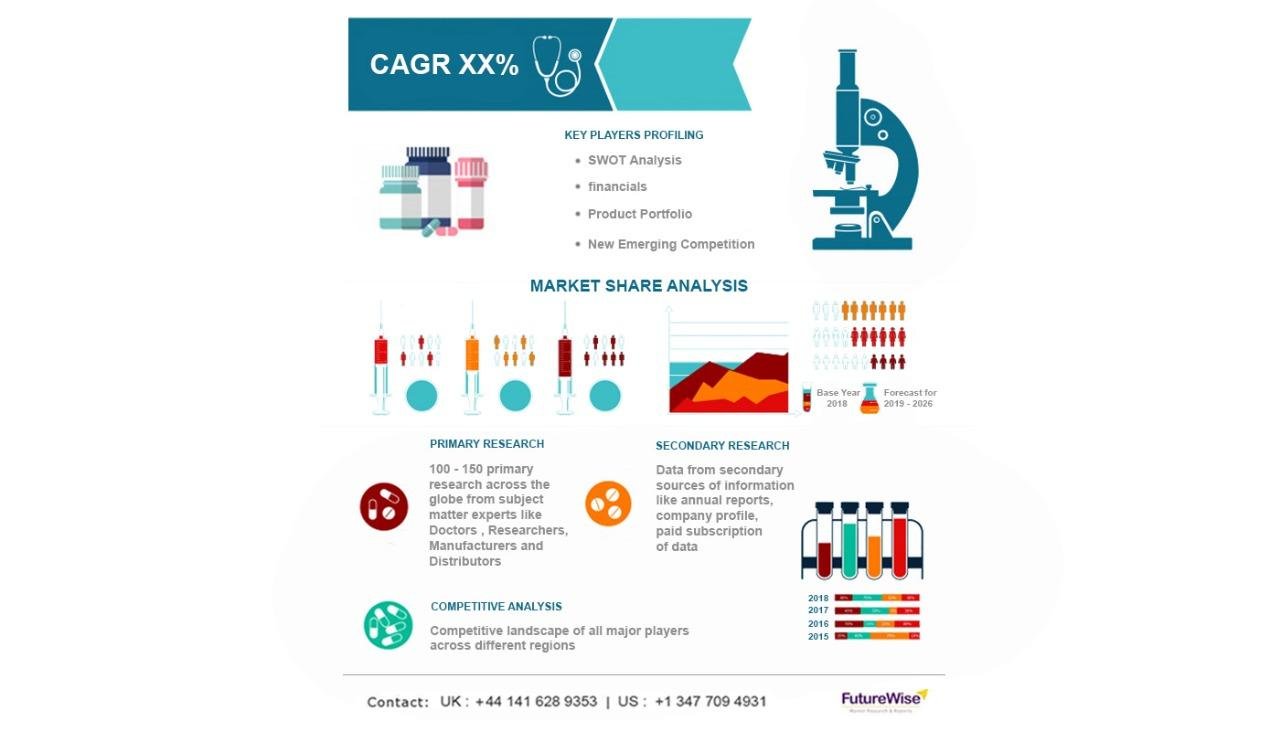According to FutureWise analysis the market for biomedical textiles is expected to reach US$ 26.65 billion by 2031 at a CAGR of 6.52%.
Biomedical textiles represent a category of specialized fabrics and materials specifically designed for medical and healthcare purposes. These textiles integrate the adaptability of traditional fabrics with advanced biomedical properties, allowing them to interact with biological systems effectively. This combination enables a range of applications, including wound care, tissue engineering, drug delivery systems, and implantable medical devices. The incorporation of essential features such as biocompatibility, flexibility, and durability enhances the role of biomedical textiles in modern medicine, ultimately leading to improved patient outcomes and innovative treatment options.
The spectrum of biomedical textiles includes various products, such as surgical sutures, bandages, wound dressings, artificial ligaments, vascular grafts, and scaffolds used for tissue regeneration. To meet stringent medical standards, materials like natural fibers (e.g., cotton, silk), synthetic polymers (e.g., polyester, polyurethane), and biodegradable materials (e.g., polylactic acid) are carefully selected or engineered. For instance, antimicrobial textiles help prevent infections in wound dressings, while bioresorbable materials gradually dissolve within the body, eliminating the need for surgical removal.
Advanced manufacturing techniques, such as electrospinning and 3D weaving, allow for the creation of textiles with specific structures. An example includes nanofiber scaffolds that can mimic natural tissue, which is particularly useful in regenerative medicine.
Biomedical textiles find applications across various medical fields—from external wound management to internal devices like heart valves and hernia meshes. Their mechanical strength and biocompatibility make these textiles vital in orthopedics, cardiology, and reconstructive surgery. Additionally, the development of smart textiles, which incorporate sensors or drug-delivery systems, is emerging as an innovative frontier, facilitating real-time physiological monitoring and the controlled release of therapies.
The evolution of biomedical textiles is not without challenges, including the need to ensure long-term biocompatibility, maintain scalability, and address cost-effectiveness in advanced applications. However, ongoing research in areas such as nanotechnology, biomaterials, and intelligent systems is fostering innovation, making these textiles increasingly effective and accessible. As the healthcare landscape shifts toward minimally invasive and personalized approaches, biomedical textiles continue to advance, providing versatile, life-enhancing solutions that connect engineering and medicine to meet critical clinical needs.
FutureWise Market Research has published a report that provides an insightful analysis of Biomedical Textiles Market trends that are affecting the overall market growth.
Request a Free Sample @ https://www.futurewiseresearch.com/contact.aspx?rpt=3720&type=requestsample
Biomedical Textiles Market Segmentation:
By Fiber Type
- Biodegradable
- Collagen
- Chitin
- Others
- Non-biodegradable
- Polypropylene and Polyethylene
- Cotton
- Viscose
- Polyester
- Polyamide
- Others
- Polyurethane
- Polytetrafluoroethylene(PTFE)
By Fabric Type
- Non-Woven
- Woven
- Others
- Knitted and Braided Fabrics
- Hollow Fabric
By Application
- Non-Implantable
- Bandages
- Surgical Sutures
- Others
- Implantable
- Soft Tissue Implants
- Hard Tissue Implants
- Dental Prosthesis
- Vascular Devices
- Extracorporeal Devices
- Implantable
By Region
- North America
- Europe
- Asia-Pacific
- Latin America
- Middle East and Africa
Competitive Landscape in Biomedical Textiles Market:
- Royal DSM N.V.
- Medtronic PLC
- Integra Lifesciences Corporation
- Johnson and Johnson
- Smith and Nephew PLC
- Medline Industries, Inc.
- B. Braun Melsungen AG
- Cardinal Health, Inc.
- Paul Hartmann AG
- BSN Medical (A Part of Svenska Cellulosa Aktiebolaget Sca)
Buy now the latest version of this report: https://www.futurewiseresearch.com/checkout.aspx?ReportId=3720&license=multi
**Objectives of this Study: **
- To provide a comprehensive analysis of the Biomedical Textiles Market By Fiber Type, By Fabric Type, By Application and By Region.
- To offer detailed insights into factors such as drivers, restraints, trends, and opportunities, as well as segmental and regional influences on market growth.
- To evaluate current market trends and forecast micro-markets, presenting overall market projections in the form of data sets and PowerPoint presentations.
- To predict the market size in key regions, including North America, Europe, Asia Pacific, Latin America, and the Middle East and Africa.
Flexible Delivery Model:
- We have a flexible delivery model and you can suggest changes in the scope/table of contents as per your requirement
- The customization services offered are free of charge with the purchase of any license of the report.
- You can directly share your requirements/changes to the current table of contents to: sales@futurewiseresearch.com
